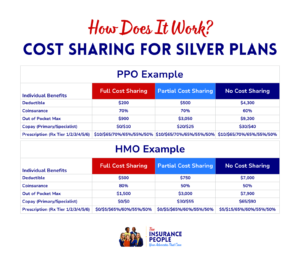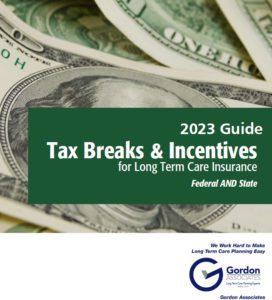From Gordon Associates – we are pleased to post this guest blog from Alexandra Eidenberg with The Insurance People.
This blog covers an important topic we’re hearing more and more about. We hope you find it valuable.
The Health Insurance Marketplace, also known as the exchange, offers a variety of options for individuals and families to enroll in qualified Affordable Care Act plans. However, navigating the exchange can be confusing and even overwhelming. In the individual market, there are several ways you can apply for health insurance. Before applying, it is important to know key information and understand the difference between plans. Here are some common questions you should know the answers to.
How do you apply for an Affordable Care Act plan?
There are two ways to apply for this type of plan. You can apply off-exchange, which means you’re applying directly with a health insurance carrier. When you apply directly with a carrier, you’re not accessing a subsidy, a type of financial aid, which means the insurance is full price. Applying on-exchange means the application is completed through healthcare.gov, which offers subsidy options for lower costs.
What is the difference between qualified and non-qualified health plans?
In the individual market, there are two different ways you can go: qualified or non-qualified. Qualified health insurance plans meet the standards of the Affordable Care Act. These plans are unlimited and cover both pre-existing conditions and preventive health care. Non-qualified insurance plans do not meet the standards of the Affordable Care Act, and the policies are limited. They also do not cover preexisting conditions, and you can be declined coverage. Non-qualified plans are not readily available in Illinois but are very popular in other states.
Why is the exchange important?
The exchange is the shopping place for individual health insurance and allows folks to apply for a subsidy, financial aid, to offset the cost of the insurance. Depending on your income level, plans start at $1 and offer immediate access to benefits with no waiting period and no pre-existing condition clauses. Additionally, silver plans at lower income levels also include cost-sharing.
What is cost-sharing?
When the government gives people financial aid to offset the cost of a policy, it’s like they’re giving you a coupon to buy a Bronze, Silver, or Gold plan. The subsidy offsets the monthly premium costs. However, the Silver plans are the only plans that have cost-sharing, which lowers your deductible, out-of-pocket, and copays. See below for an example of how cost sharing affects the plan design, depending on your income level.
What do the metallic plan colors mean?
When choosing a health insurance plan, it can be tempting to want the very best. Because of the Olympics, we assume plans follow a similar structure: Gold is the best, Silver is the runner-up, and Bronze is the third-best. But there’s more to it than that!
All options in the individual and small group market are designated by color. They are Bronze, Silver, Gold, and Platinum. In the individual market, there are no Platinum plans here in Illinois. There are only Bronze, Silver, and Gold options, but small groups do have a Platinum option available.
These color designations are given to all carriers and plans based on deductibles and out-of-pocket expenses. And year after year, the regulations of the Affordable Care Act dictate what the plan components can (and can’t) be. In any given situation, someone’s needs—how they use their policy and how they use their insurance—will help dictate which type of plan to choose.
There’s no advantage to buying a Gold plan in the individual market when you’re getting subsidized. Someone who receives a subsidy would very rarely choose a Gold plan because Silver plans are better when you are subsidized. The Silver plans for those not receiving subsidies do not have $0 deductibles and $0 co-pays. For those who do not qualify for a subsidy, we will review plan options that best fit your budget with the components you want.
We are here to help!
Understanding on-exchange options and subsidies allows folks to make the best decision for their health insurance needs. However, even with these questions answered, the application process for individual insurance can still be complicated. Alexandra and her team are ready to walk you through the different options, both on-exchange and off-exchange. We will look up your doctors, medications, and review the various carriers and plans available to you. The price is the same whether you go directly or work with The Insurance People. Reach out today for complimentary service and help reviewing and selecting your individual plan.



 To help determine if long-term care (LTC) insurance is right for you, we are offering a FREE informational guide. This is a comprehensive booklet that will answer many of your questions about LTC and assist you with your health care planning.
To help determine if long-term care (LTC) insurance is right for you, we are offering a FREE informational guide. This is a comprehensive booklet that will answer many of your questions about LTC and assist you with your health care planning. To help determine if long-term care (LTC) insurance is right for you, we are offering a FREE informational guide. This is a comprehensive booklet that will answer many of your questions about tax breaks and incentives for LTCI for federal and state taxes.
To help determine if long-term care (LTC) insurance is right for you, we are offering a FREE informational guide. This is a comprehensive booklet that will answer many of your questions about tax breaks and incentives for LTCI for federal and state taxes.